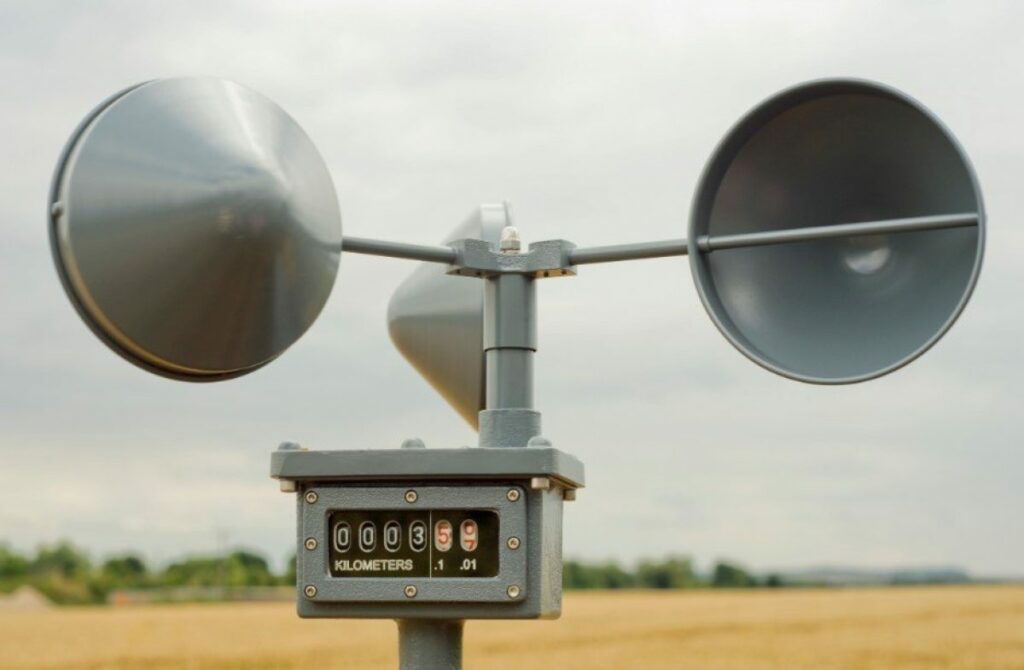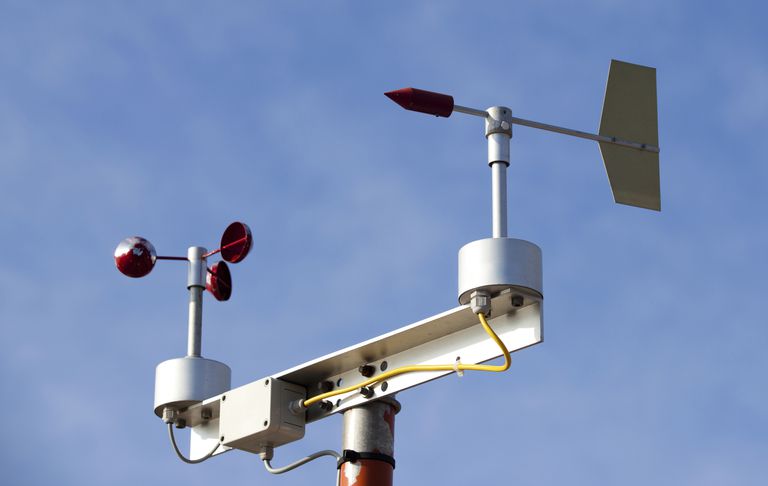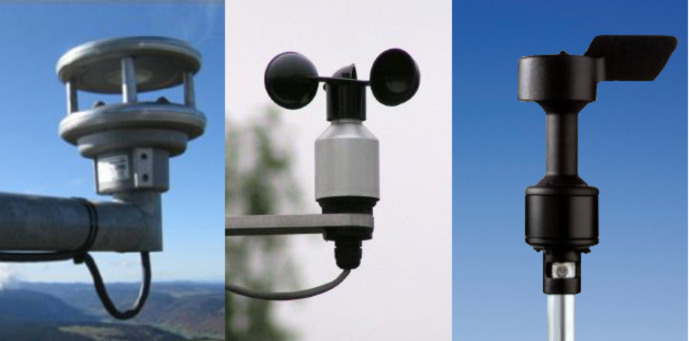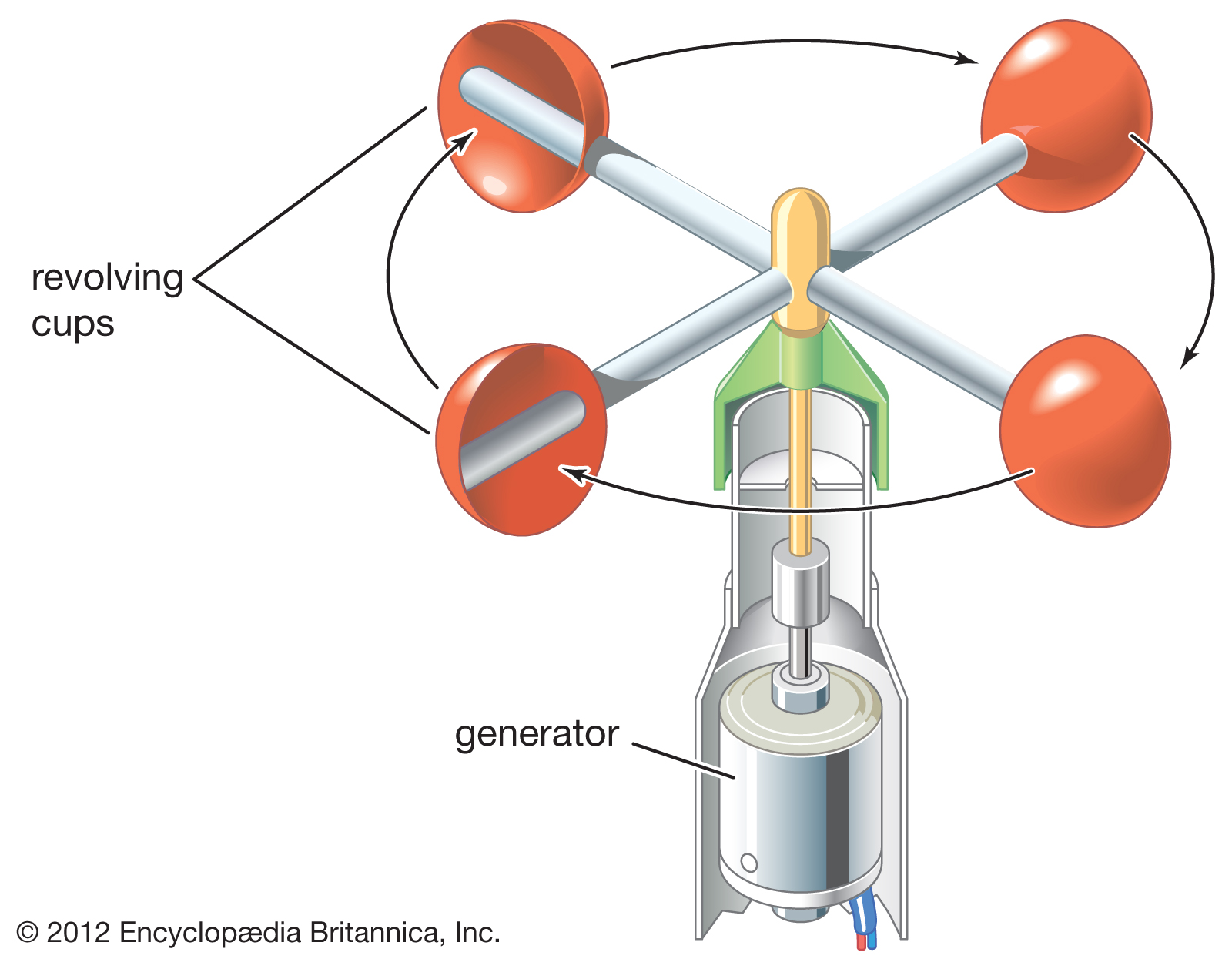What is an Anemometer? What’s it saying to us? It tells us how quickly the wind blows. For a lot of various scientists, this could be helpful. For example, to measure wind patterns, meteorologists use anemometers. So, what does an anemometer help to measure for scientists? In this post at Linquip, we examine what an anemometer is, how it works, who uses them, who invented them, as well as different types of anemometers.
What is an Anemometer?
An anemometer is an instrument that is used to determine the speed, intensity, amplitude, and direction of the wind. Such a technique is often used by meteorologists to analyze what conditions occur. It is also used by physicists to consider the course of airflow. Hundreds of years ago, the first ones were developed to approximately quantify wind. They are available in manual and digital formats and can be used to calculate both gas velocity and velocity in enclosed flow and unconfined flows, such as ambient wind. Anemometers come in all sorts of forms and sizes. Some are portable handheld anemometers and, as part of weather stations, others are installed into and connected to structures.
Now that you know what anemometers are, you might want to know who invented the anemometer? Anemometers have been used for hundreds of years. Many people invented their models of the anemometer, following in the wake of the first development, some of them being wrongly credited with their invention. Robert Hooke or the Mayans are among these. Some, in 1709, gave Wolfius credit. It is said that Italian inventor Leon Battista Alberti invented the first anemometer in 1450, and this should mostly be given credit. Also, John Thomas Romney Robinson, a scientist in the United Kingdom, invented the anemometer in 1846. Many modifications are made later on and various kinds of anemometers are invented to more accurately measure wind speed and pressure.
An anemometer is a tool that measures wind velocity and wind pressure. Parts of the anemometer include three to four cups connected to the horizontal arms of the most common sort of anemometer. A vertical rod is attached to the arms. The cups rotate while the wind blows, thereby making the rod spin. The stronger the wind blows, the more quickly the rod spins.
Next to the question of “what is an anemometer?”, is the question of “what units does the anemometer measure in? to know about anemometer units and what it measures. An anemometer is used to measure how windy it is before sailing on a sailboat. An anemometer might be used by an air conditioning repair technician to measure the output of a unit they are troubleshooting. To measure crosswind, a professional sports shooter would use an anemometer so that they can compensate and strike a target from several hundreds of feet away.
Anemometers might be used by storm chasers and weather hobbyists to understand how hard the wind is blowing. To decide whether a certain area will be a good place to extract wind power from, a wind turbine surveyor can use a handheld portable anemometer. Another goal of the anemometer is to estimate the climatic conditions and provide information on the speed and direction of the wind. So, it’s also known as an instrument for temperature management.
Having covered what an anemometer is and what does it measure, let’s learn about anemometer uses. Anemometers are used at almost all-weather stations. For pilots, engineers, and climatologists, wind speed helps signal a shift in weather conditions, such as an incoming hurricane. Since weather forecasts do not have live data, these devices help track airfields and airports to minimize the danger of low-altitude planes flying during take-off and landing.
Additionally, e.g., laser anemometers measure the wind velocity around vehicles, aircraft, and spacecraft. Anemometers make these cars more aerodynamic by assisting engineers.
Getting into more examples, we can also mention sailors or windsurfers who want wind speed or wind direction to be measured; people may search for safe weather conditions for paragliding; as a scientific way to measure airflow in an air conditioning, heating or ventilation unit, and for monitoring cranes in construction activity
Types of Anemometer
There are various types of anemometers and they function in different ways. Here are a few examples of the various kinds of anemometers.
Cup anemometer: Having the question “what is anemometers?” in mind, we should say that one of the oldest types of anemometer is the cup or rotational anemometer. The cups are set on a vertical axis, and this allows the cups to spin about as the wind pushes towards them. The quicker the movement of the cups, the faster the wind level. Usually, cup anemometers have automated readouts. This type of anemometer is used worldwide by scholars, educational institutions, and meteorologists for scientific and commercial activities.
hot wire anemometer: The hot wire anemometer is an instrument for the measurement of fluid velocity and direction by measuring the heat loss of the electrically heated wire inserted in the air stream. It consists of an electrically heated, fine-wire portion supported by needles at its ends. The anemometer is mounted at a position and the wire is cooled when the wind passes over the hot wire. There is a clear relationship between the rate at which the wind blows and how cold the wire gets.
The heat is transmitted from the wire to the air when put in an air stream, and the temperature of the wire decreases. The wire’s resistance tests the airflow rate. In the heating, ventilating, and air-conditioning industries, you will find this sort of anemometer; it tests the airflow through building ducts.
Windmill anemometer: This is the third type to put it for the question of what is anemometers. The anemometer for the windmill measures both wind speed and direction. The anemometer has a propeller and a large tail segment situated at the front of the unit.
It presses against the propeller while the wind blows, making it spin. The propeller’s rotational speed shows how fast the wind is going at any moment.
Pressure Tube anemometer: A windsock is considered a pressurized tube anemometer.
About airports, these machines are located. Stuff is manufactured and attached to wires in a tube shape. The wider end of the conduit captures it as the wind blows. Since the greater end of the sock can shift towards the wind, this anemometer gives wind direction. The harder the wind blows, the higher the pipe rises from the surface. Pressure tubes do not have readings but are relative wind velocity measurements.
Ultrasonic anemometer: Sonic pulses are emitted by ultrasonic anemometers over a path to a sensor on the opposite side. The pulses are interrupted as the wind passes more rapidly. Precise wind data provides a calculation of this disturbance. There are no moving parts for an ultrasonic anemometer and it can detect even slight shifts in the wind. Usually, the system has four sensors grouped in a square pattern. Some systems come with built-in heaters.
Laser Doppler anemometer: To calculate the flow of air, laser Doppler anemometers use the Doppler effect. Commonly used for high-tech applications such as jet aircraft, even the smallest changes in airflow can be calculated by the laser Doppler. In river hydrology, this sort of anemometer is often used.
Conclusion
You will now have a good understanding of the question “what is an anemometer?”, what it is used for, and what are the different types. As the article illustrated, anemometers are used to measure wind speed. However, they can be used in other applications as well. We now know any different kinds of anemometers, each with special features, are on the market. Feel free to leave us any comments, or questions about the topic “what is an anemometer?” by registering at Linquip. We will get back to you as soon as possible.
Buy Equipment or Ask for a Service
By using Linquip RFQ Service, you can expect to receive quotations from various suppliers across multiple industries and regions.
Click Here to Request a Quotation From Suppliers and Service Providers
Read More In Linquip







Thanks for visiting our website. You are encouraged to visit our other posts as well.